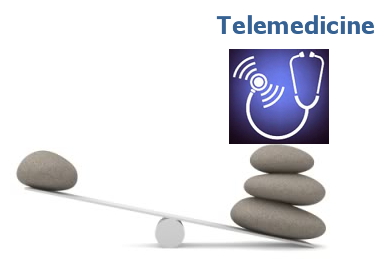
Telemedicine Tipping Point
Telemedicine has clearly already passed the tipping point. Consider:
- The Affordable Care Act has created millions of new health care consumers, stretching doctors even further, leading them to seek new ways to serve more people.
- The recent scandals with the Veterans Affairs Medical Centers have proven the urgency of delivering health care quickly and efficiently, which telemedicine can do.
- The rising cost of health care is driving doctors and patients to seek more affordable solutions, including telemedicine.
- Thanks to new technology like WebRTC and Vidyo, better video technology has greatly improved the user experience for both patients and doctors.
- “The global telehealth market is expected to grow by more than a factor of 10 from 2013 to 2018,” according to IHS Technology.
Telemedicine ROI
Most importantly, when you consider telemedicine’s return on investment (ROI), it becomes clear that telemedicine’s time is now. Take for instance the cost of intensive care. This article in Executive Insight makes the case for replacing round-the-clock patient monitoring with frequent check-ins through video:
In the US, the “bunker” approach to providing continuous intensive care unit (ICU) monitoring and intensivist services has lost favor due to the high cost of monitoring technology and redundant manpower. A far less costly model — intensivist “round and respond” — is being adopted in many hospitals, making program ROI easily achievable. A Florida hospital providing nighttime “round and respond” services to three community hospitals has lowered ICU patient length of stay (LOS) by 0.6 days, resulting in savings of over $2 million per year.
In another case, the St. Vincent Health System recently implemented a telehealth network, connecting providers with patients in virtual environments across 26 facilities in Pennsylvania. The result? “The program achieved a 100 percent return on investment within two months by expanding the reach of Saint Vincent’s bariatric services,” say Saint Vincent officials.
Telehealth can also earn big returns on investment by reducing hospital readmission. “Scaling Telehealth Programs: Lessons from Early Adopters,” a paper by the Commonwealth Fund, demonstrates the results. In 2010-11, Centura Health at Home launched a pilot program to see if telehealth could reduce costs for patients suffering from congestive heart failure, chronic obstructive pulmonary disease, and diabetes. The result: 30-day readmission rates dropped 62 percent, saving an estimated $1,000 to $1,500 per patient, according to the report.
If you need to build a business case for telemedicine, check out the Mid-Atlantic Telehealth Resource Center online, which provides a few ROI calculators you can use to demonstrate the value of telemedicine. As you can see, the cost to implement telehealth is much less than the value gained by caring for patients remotely.
Sources:
- Roeen Roashan. IHS release – World Market on Telehealth 2014
- Bruce Japsen. Forbes article – “ObamaCare, Doctor Shortage To Spur $2 Billion Telehealth Market”
- Tim Wright. Executive Insight article – “The Financial Benefits of Acute Care Telemedicine” Advanced Healthcare Network
- Erin McCann. Healthcare Finance News article – “Health system builds telehealth network, sees nearly 100 percent ROI”



